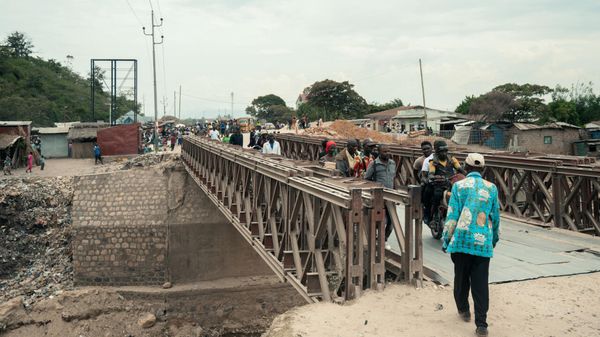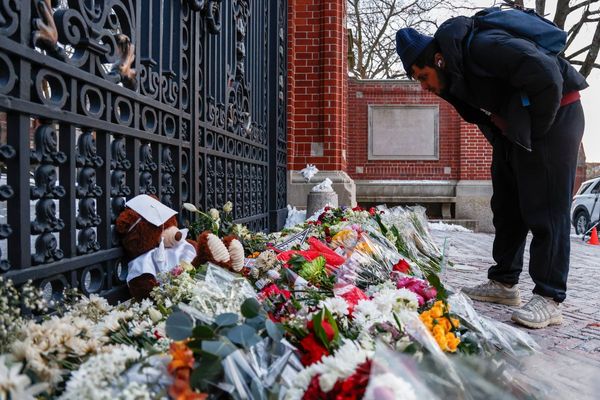
Drownings in France have risen 45 percent this summer compared to the same period last year, with deaths more than doubling during the early summer heatwave, the country’s public health agency has said. It warns that climate change will make this trend more frequent.
France's early summer heatwave, between 19 June and 6 July, saw 86 deaths by drowning recorded by Santé Publique France (SPF) – compared to 36 between the same dates in 2024.
The public health agency noted that the high temperatures had "led to an influx of people to swimming areas to cool off" – often unsupervised – and is warning that this is a pattern likely to be repeated, as the effects of climate change grow.
"As authorised swimming areas were likely to be crowded, some people may have sought to swim in areas that are not designated or supervised for swimming, in natural environments," explained Aymeric Ung, an epidemiologist at SPF, speaking to RFI.
Climate change pushed temperatures in latest European heatwave up by 4C
The dangers of wild swimming
Earlier this month, health authorities called for compliance with swimming bans, pointing to the risks associated with unsupervised sites, as almost 200 people lost their lives by drowning in less than two months in France.
Between 1 June and 23 July, 193 deaths by drowning were reported in mainland France and the overseas territories, according to SPF. The agency said this represents a 45 percent increase compared to the same period last year, when 133 deaths were recorded.
With the highest number of these recorded at sea, followed by rivers then lakes, the SPF stressed the elevated risk of drowning when swimming in natural environments, where sites are neither equipped nor supervised.
Axel Lamotte of the French Lifeguard Association said this pattern is likely to continue in the future due to unseasonal heatwaves, leading to an extended period in which swimming in unsafe bodies of water is tempting.
"In the future, we may have swimming seasons that start in mid-April or mid-May and last until the All Saints' Day holidays, for example. We will have to adapt to this change in climate," he said.
Seine swimming sites attract tens of thousands despite weather closures
Extending the period of supervision of beaches, lakes and rivers would require more lifeguards being trained, as there is currently a shortage of 5,000, he said.
There are other risks particular to swimming in natural bodies of water.
"In alpine lakes, we know that the water temperature can be cold, while the air temperature is warm – conditions that can cause hypothermia," said fire brigade captain Julien Costanzo, deputy chief of the Aix-les-Bains company in the Savoie department, eastern France.
In natural environments, underwater visibility is limited, the seabed can sometimes be dangerous and currents can form.
He added another risk factor: "We have people who sometimes swim in rivers, in prohibited areas where dams are being released. People get trapped or swept away because the water rises quite violently."
In the neighbouring Haute-Savoie department, four people have drowned in Lake Annecy since the start of the summer, including a man who was on a boat with friends and sank after jumping into the water. According to local press reports, he was not a strong swimmer.
How the Paris Olympic Games transformed the Porte de la Chapelle
Olympic legacy
While adults often overestimate their ability to swim long distances, Costanzo highlighted that many children lack swimming skills entirely, saying: "More and more children lack confidence in the water."
So far this year, 27 children and teenagers have lost their lives by drowning, compared to 15 in 2024.
"In natural environments it's much deeper, it's not the same – there are currents and waves. It's easier to swallow water," said Anne-Sophie Portefaix, a tourist from Auvergne returning from a pedalo trip on Lake Bourget in Savoie with friends and her eight-year-old daughter, who she said "can manage in a swimming pool".
At the Maurice Thorez aquatic centre in Montreuil, east of Paris, which was renovated last summer to host Olympic water polo training sessions, six-year-old Iliam, sporting a shark-head swimming cap, is delighted to show that he is "no longer afraid" of drowning.
This is since he started attending the pool's free "Learn to Swim", an initiative tied to the 2024 Paris Olympic Games.
This summer, 11 swimming pools managed by the Est Ensemble public authority are offering free intensive courses for five to 12-year-olds in nine towns in the Paris suburbs. The programme, partly subsidised by the National Sports Agency, is a continuation of the "1,2,3 swim with Paris 2024" initiative launched in 2021.
As France’s sports budget faces cuts, are Olympic promises being broken?
A year on from the Games, at which French superstar Léon Marchand took four gold medals, breaking four Olympic records, and with the Seine opening to bathers in July, swimming has continued to capture the public imagination.
"The Olympics inspire dreams, but beyond performance, it is also a national cause to teach all children to swim," said Fabien Asquoët, head of the sports policy division at Est Ensemble. These courses are "a truly necessary public service in an area affected by poverty," in addition to lessons at school, he added.
"The longer we wait [to start lessons], the more obstacles there are and the more shame," noted Benoît Montagna, director of the aquatic centre. "People become too embarrassed to tell their friends that they can't swim. And among teenagers and adults, trying to imitate others can put them in danger."
The Montreuil pool's lifeguard Lion Seller added that: "Sometimes parents themselves are afraid of water, and this parental fear, which is passed on, plays a huge role."
Social divide
There is a clear social divide when it comes to swimming lessons. The children of unskilled workers are six times more likely than children of white collar workers to not to know how to swim, according to a 2021 study by the National Institute for Youth and Popular Education.
Those who work in the sector have observed that children from more affluent social backgrounds are often better at swimming thanks to travelling on their summer holidays.
Asquoët said: "When we ran a trial in June with 130 children aged nine and 10 at Noisy-le-Sec to introduce them to swimming in a natural environment, for many of them it was the only week of the holidays that they went away anywhere."
In 2026, he hopes to see an increase in the number of children in their last year of primary school who will obtain their "safe swimming" certificate – across Est Ensemble, only 53 percent passed last year.
Iliam, who thought he was "drowning" on holiday last summer, is now happily practising the freestyle and has been learning how to be safe in the water if he were to get into difficulty.
"I really like it," he said. "When I fall into the water I either swim or float on my back, do the starfish... my body saves me [by floating]."
(with AFP and partially adapted from this article in French)







